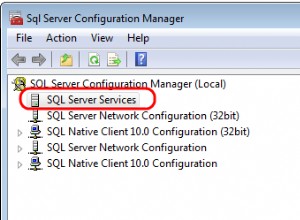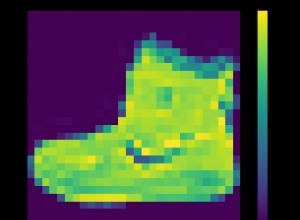Solusi utama dalam kasus saya, menghindari makecert dan openssl adalah dengan menggunakan Powershell dan BouncyCastle. Saya melakukan fork repo PSBouncyCastle dari PSBouncyCastle oleh RLipscombe dan mendorong 1.8.1 Bouncy Castle masuk. Versi bercabang saya adalah yang saya gunakan untuk skrip, garpu berada di Bercabang:PSBouncyCastle.New .
Saya kemudian menggunakan StackOverflow:C# Menghasilkan Sertifikat dengan Cepat sebagai inspirasi untuk menulis powershell berikut di bawah ini, Saya akan menambahkan ini ke GitHub saya dan berkomentar, dan saya akan mengubah ini segera setelah saya melakukannya :
Import-Module -Name PSBouncyCastle.New
function New-SelfSignedCertificate {
[CmdletBinding()]
param (
[string]$SubjectName,
[string]$FriendlyName = "New Certificate",
[object]$Issuer,
[bool]$IsCA = $false,
[int]$KeyStrength = 2048,
[int]$ValidYears = 2,
[hashtable]$EKU = @{}
)
# Needed generators
$random = New-SecureRandom
$certificateGenerator = New-CertificateGenerator
if($Issuer -ne $null -and $Issuer.HasPrivateKey -eq $true)
{
$IssuerName = $Issuer.IssuerName.Name
$IssuerPrivateKey = $Issuer.PrivateKey
}
# Create and set a random certificate serial number
$serial = New-SerialNumber -Random $random
$certificateGenerator.SetSerialNumber($serial)
# The signature algorithm
$certificateGenerator.SetSignatureAlgorithm('SHA256WithRSA')
# Basic Constraints - certificate is allowed to be used as intermediate.
# Powershell requires either a $null or reassignment or it will return this from the function
$certificateGenerator = Add-BasicConstraints -isCertificateAuthority $IsCA -certificateGenerator $certificateGenerator
# Key Usage
if($EKU.Count -gt 0)
{
$certificateGenerator = $certificateGenerator | Add-ExtendedKeyUsage @EKU
}
# Create and set the Issuer and Subject name
$subjectDN = New-X509Name -Name ($SubjectName)
if($Issuer -ne $null) {
$IssuerDN = New-X509Name -Name ($IssuerName)
}
else
{
$IssuerDN = New-X509Name -Name ($SubjectName)
}
$certificateGenerator.SetSubjectDN($subjectDN)
$certificateGenerator.SetIssuerDN($IssuerDN)
# Authority Key and Subject Identifier
if($Issuer -ne $null)
{
$IssuerKeyPair = ConvertTo-BouncyCastleKeyPair -PrivateKey $IssuerPrivateKey
$IssuerSerial = [Org.BouncyCastle.Math.BigInteger]$Issuer.GetSerialNumber()
$authorityKeyIdentifier = New-AuthorityKeyIdentifier -name $Issuer.IssuerName.Name -publicKey $IssuerKeyPair.Public -serialNumber $IssuerSerial
$certificateGenerator = Add-AuthorityKeyIdentifier -certificateGenerator $certificateGenerator -authorityKeyIdentifier $authorityKeyIdentifier
}
# Validity range of the certificate
[DateTime]$notBefore = (Get-Date).AddDays(-1)
if($ValidYears -gt 0) {
[DateTime]$notAfter = $notBefore.AddYears($ValidYears)
}
$certificateGenerator.SetNotBefore($notBefore)
$certificateGenerator.SetNotAfter($notAfter)
# Subject public key ~and private
$subjectKeyPair = New-KeyPair -Strength $keyStrength -Random $random
if($IssuerPrivateKey -ne $null)
{
$IssuerKeyPair = [Org.BouncyCastle.Security.DotNetUtilities]::GetKeyPair($IssuerPrivateKey)
}
else
{
$IssuerKeyPair = $subjectKeyPair
}
$certificateGenerator.SetPublicKey($subjectKeyPair.Public)
# Create the Certificate
$IssuerKeyPair = $subjectKeyPair
$certificate = $certificateGenerator.Generate($IssuerKeyPair.Private, $random)
# At this point you have the certificate and need to convert it and export, I return the private key for signing the next cert
$pfxCertificate = ConvertFrom-BouncyCastleCertificate -certificate $certificate -subjectKeyPair $subjectKeyPair -friendlyName $FriendlyName
return $pfxCertificate
}
Beberapa contoh penggunaan untuk PowerShell ini adalah:
Buat CA Root
$TestRootCA = New-SelfSignedCertificate -subjectName "CN=TestRootCA" -IsCA $true
Export-Certificate -Certificate $test -OutputFile "TestRootCA.pfx" -X509ContentType Pfx
Buat Tanda Tangan Sendiri Standar
$TestSS = New-SelfSignedCertificate -subjectName "CN=TestLocal"
Export-Certificate -Certificate $TestSS -OutputFile "TestLocal.pfx" -X509ContentType Pfx
Buat sertifikat, tanda tangani dengan sertifikat root
$TestRootCA = New-SelfSignedCertificate -subjectName "CN=TestRootCA" -IsCA $true
$TestSigned = New-SelfSignedCertificate -subjectName "CN=TestSignedByRoot" -issuer $TestRootCA
Export-Certificate -Certificate $test -OutputFile "TestRootCA.pfx" -X509ContentType Pfx
Export-Certificate -Certificate $test -OutputFile "TestRootCA.pfx" -X509ContentType Pfx
Buat Tanda Tangan Sendiri dengan Penggunaan Tertentu
$TestServerCert = New-SelfSignedCertificate -subjectName "CN=TestServerCert" -EKU @{ "ServerAuthentication" = $true }
Perhatikan bahwa parameter -EKU menerima melalui splatting, ini dilakukan untuk memastikan bahwa apa pun yang ditambahkan ke Add-ExtendedKeyUsage diteruskan secara valid. Ia menerima penggunaan sertifikat berikut:
- Tanda Tangan Digital
- Tanpa Penolakan
- Pengenkripsi Kunci
- Pengenkripsian Data
- Perjanjian Kunci
- KeyCertSign
- CrlSign
- Hanya Penyandi
- Hanya Pengurai
Ini sesuai dengan kebutuhan saya dan tampaknya berfungsi di semua Platform Windows yang kami gunakan untuk lingkungan dinamis.




